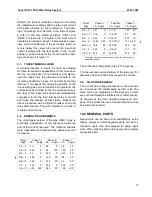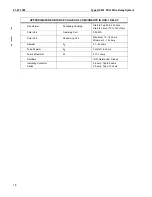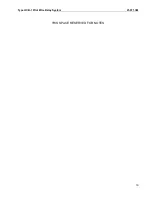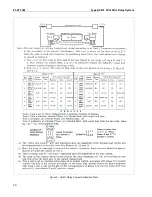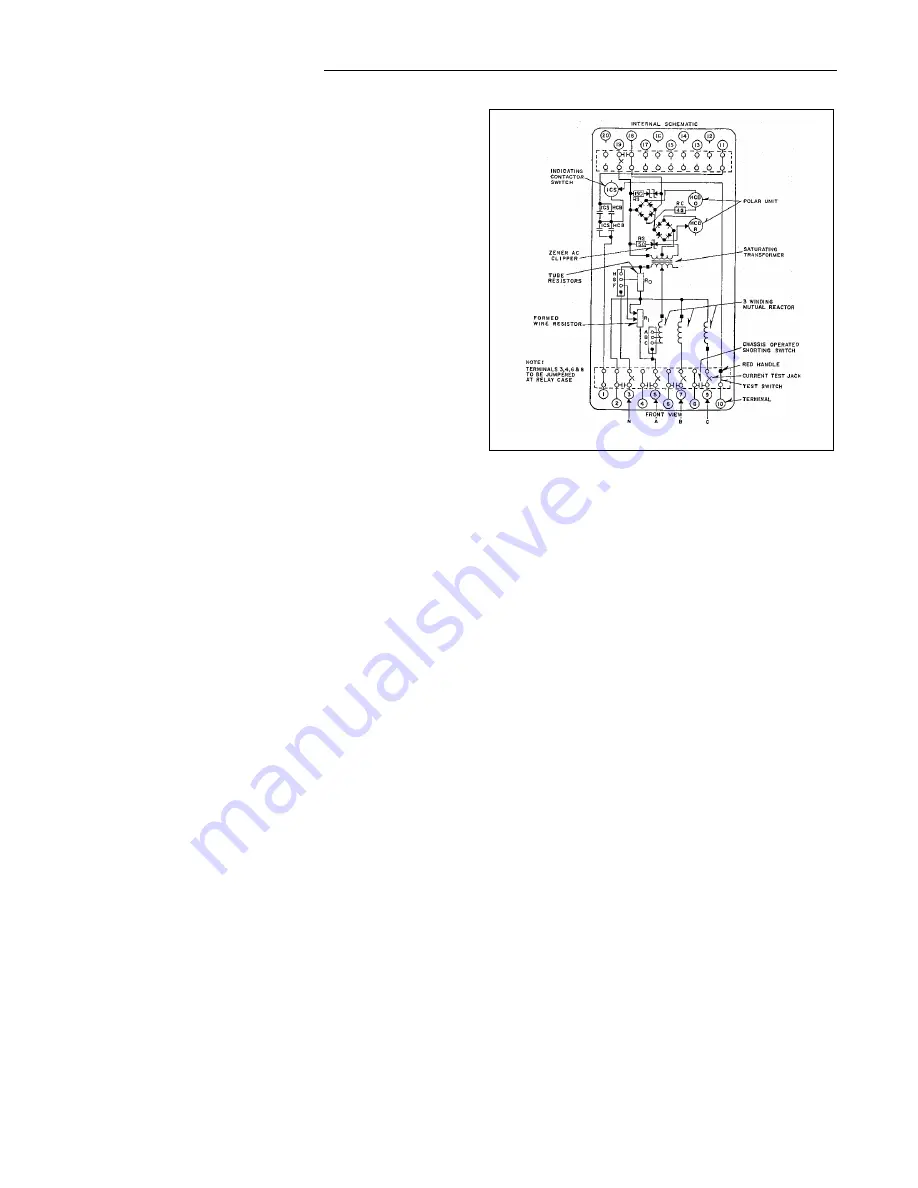
Type HCB-1 Pilot Wire Relay System
41-971.3M
5
the pilot-wire is open circuited, almost all the restraint
coil current will flow through the operating coil, and
the relay operates as an overcurrent relay on fault
currents.
Excessive pilot-wire series impedance will approach
an open-circuited condition and the relays will oper-
ate during external faults. Excessive pilot-wire shunt
capacitance will approach a short-circuited condition
and the relays will not operate. The pilot-wire require-
ments are given in Table 4.
3.2.
POLAR UNIT THEORY
The polar unit flux paths are shown in Figure 5. With
balanced air gaps, the permanent magnet produces
flux flowing in two path, one through the front gaps
and one through the rear gaps. This flux produces
north and south poles, as shown. By turning the left
shunt in, some of the flux is forced through the arma-
ture, making it a north pole. Thus, reducing the left-
hand rear gap will produce a force tending to pull the
armature to the right. Similarly, reducing the right-
hand gap will produce a force tending to pull the
armature to the left.
Electrical flux produced by current flowing in the
operating and restraint windings of the polar unit
either adds to or subtracts from the magnetic flux. In
the case of restraint current, the flux adds to the
magnetic flux to keep the armature to the right. On
the other hand, the operating current subtracts from
the magnetic flux to move the armature to the left. On
an ampere turn basis, the polar unit operates when
the operating ampere turns are greater than the
restraint ampere turns plus the magnetic restraint or
bias expressed in ampere turns.
4.0 CHARACTERISTICS
The voltage, V
F
, impressed by the filter upon the sat-
urating transformer varies with the tap setting (A, B,
C) of the relay.
The sequence network in the relay is arranged for
several possible combinations of sequence compo-
nents. For tap C the output of the network will contain
the positive, negative and zero sequence compo-
nents of the line current. In this case, the taps on the
upper tap plate indicate the balanced three-phase
amperes (positive sequence amperes) which will pick
up the relay with the pilot-wire open.
For phase-to-phase faults AB and CA, enough nega-
tive sequence current has been introduced to allow
the relay to pick up at 86% of the tap setting. For BC
faults, the relay will pick up at approximately 53% of
the tap setting. This difference in pickup current for
different phase-to-phase faults is fundamental; and
occurs because of the angles at which the positive
and negative sequence components of current add
together.
In some applications, the maximum load current and
minimum fault current are too close together to set
the relay to pick up under minimum fault current, and
not operate under load with the pilot-wire accidently
open. For these cases, tap B is available which cuts
the three-phase sensitivity in half, while the phase-to-
phase setting is substantially unchanged. The relay
then trips at 90% of tap value for AB and CA faults,
and at twice tap value for three-phase faults. The set-
ting for BC faults is 65 percent of tap value.
It is possible to eliminate response to positive
Sub 5
763A628
Figure 3:
Internal Schematic of the Type HCB-1 Re-
lay in FT-42 Case (Double Trip Circuit). For the Single
Trip Relay, the Circuits Associated with Terminal II are
omitted.
Summary of Contents for HCB-1
Page 19: ...Type HCB 1 Pilot Wire Relay System 41 971 3M 19 THIS SPACE RESERVED FOR NOTES ...
Page 21: ...Type HCB 1 Pilot Wire Relay System 41 971 3M 21 ...
Page 22: ...41 971 3M Type HCB 1 Pilot Wire Relay System 22 Figure 10 Typical HCB 1 Relay System ...
Page 23: ...Type HCB 1 Pilot Wire Relay System 41 971 3M 23 Sub 15 4810D98 ...
Page 27: ...Type HCB 1 Pilot Wire Relay System 41 971 3M 27 THIS PAGE RESERVED FOR NOTES ...

















